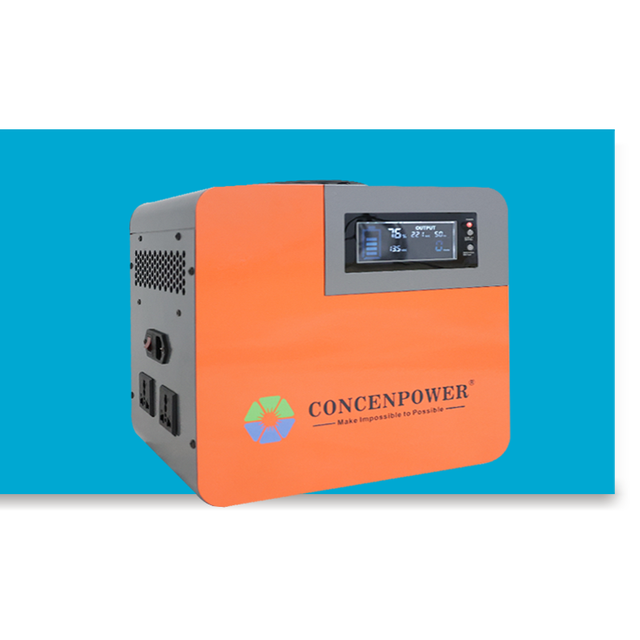
A portable power station is an essential tool for modern living—especially when access to grid power is limited or unreliable. Whether you’re camping off-grid, working on a remote construction site, or preparing for unexpected blackouts, portable power stations serve as compact, rechargeable batteries that can power a variety of electronic devices and appliances. But one of the most common questions users ask is: What can a portable power station run? This article dives deep into the capabilities of these units, guiding you through realistic use cases, appliance compatibility, and key considerations.
The first step in determining what a portable power station can run is understanding power capacity. Most units list their capacity in watt-hours (Wh) and their output in watts (W). Watt-hours indicate the total amount of energy stored in the battery, while watts refer to how much energy can be output at a given moment.
For example:
A power station with 500Wh capacity can, in theory, power a 50W device for 10 hours.
If a device requires more watts than the station’s output capacity, it won’t function.
Power output is typically available through AC outlets (for standard appliances), DC outputs, and USB ports (for smaller electronics).
Portable power stations with a 300W or lower output are generally compact and designed for light-duty applications. These are perfect for:
Smartphones and tablets – USB charging is extremely efficient.
Laptops – Usually require 45W–100W.
LED lights – Use as little as 10W–15W.
Wi-Fi routers – Around 15W–20W.
Typical Runtime Table:
| Device | Power Consumption (W) | Runtime on 300Wh Station |
|---|---|---|
| Smartphone (USB) | 10W | ~30 recharges |
| Laptop | 60W | ~4–5 hours |
| LED Light Bulb | 10W | ~30 hours |
| Wi-Fi Router | 15W | ~20 hours |
These devices are easy to handle and well-suited for emergency kits, travel bags, or daily workstations.
Portable power stations with output capacities of 300W to 1000W can handle medium-load appliances, which makes them ideal for short-term home backup power or camping comfort. Examples include:
Mini refrigerators (60W–90W) – useful for keeping perishables fresh during power outages.
CPAP machines (30W–60W) – critical for health.
Electric fans (50W–75W) – important during heatwaves.
Coffee makers (500W–800W) – only for brief periods.
Although these units may not power all appliances simultaneously, load management ensures efficient usage. You can alternate between devices based on priority or time of day.
Pro Tip: Always check the starting wattage (surge) as some appliances, like refrigerators, require more power to start than to run.

Larger power stations with outputs of 1000W to 2000W or more can run high-wattage equipment such as:
Microwaves (1000W–1200W)
Hair dryers (1200W–1500W)
Power tools like circular saws or drills (700W–1500W)
Electric kettles (1000W–1500W)
Portable heaters (1200W–1800W)
These stations are suitable for temporary off-grid living, job sites, or emergency preparedness. However, they are generally heavier, more expensive, and require more time to recharge. Power stations should only be used to run one high-draw device at a time to prevent overloads.
When camping, access to electrical power enhances safety and convenience. You can power lanterns, charge GPS devices, run portable coolers, and even watch movies under the stars with a mini projector.
In the event of a blackout, having backup power for lighting, phone charging, and refrigeration can be a lifesaver. Most households find that a mid-range power station (500W–1000W) meets their basic needs for 1–2 days.
Freelancers, drone operators, and mobile content creators often use power stations to run laptops, charge camera batteries, or operate lighting gear in locations without stable electricity.

Before plugging in your appliances, verify their rated wattage and compare it with the power station’s continuous and surge power ratings.
Use the built-in display or mobile app (if available) to track remaining battery life and energy input/output.
Most units can be charged via AC wall outlets, car adapters, or solar panels. Charging time varies significantly depending on the input source and battery size. Always start with a fully charged unit before your trip or during emergencies.
Q1: Can a portable power station run a refrigerator overnight?
A1: Yes, a mini fridge consuming 60W can typically run for 4–6 hours on a 300Wh station or up to 24 hours on a 1000Wh unit, depending on usage and insulation quality.
Q2: Can I use a power station while it's charging?
A2: Many models support pass-through charging, but continuous use while charging can reduce battery lifespan. Always consult the user manual.
Q3: How long do portable power stations last?
A3: Lifespan depends on battery chemistry (lithium-ion vs. LiFePO4), charge cycles, and usage habits. Most last 3–7 years with proper care.
Q4: Can a portable power station jump-start a car?
A4: No. Portable power stations are not designed for high-amperage car battery jump-starting. Use a dedicated jump starter instead.
A portable power station is a versatile and reliable solution for powering a wide variety of electronic devices and appliances, from smartphones and laptops to CPAP machines and mini refrigerators. By understanding the wattage requirements of your equipment and the capacity of your station, you can efficiently manage power use in different settings—whether during outdoor adventures, power outages, or off-grid work environments. Equipped with the right knowledge, your power station becomes more than just a battery; it becomes a trusted energy partner.